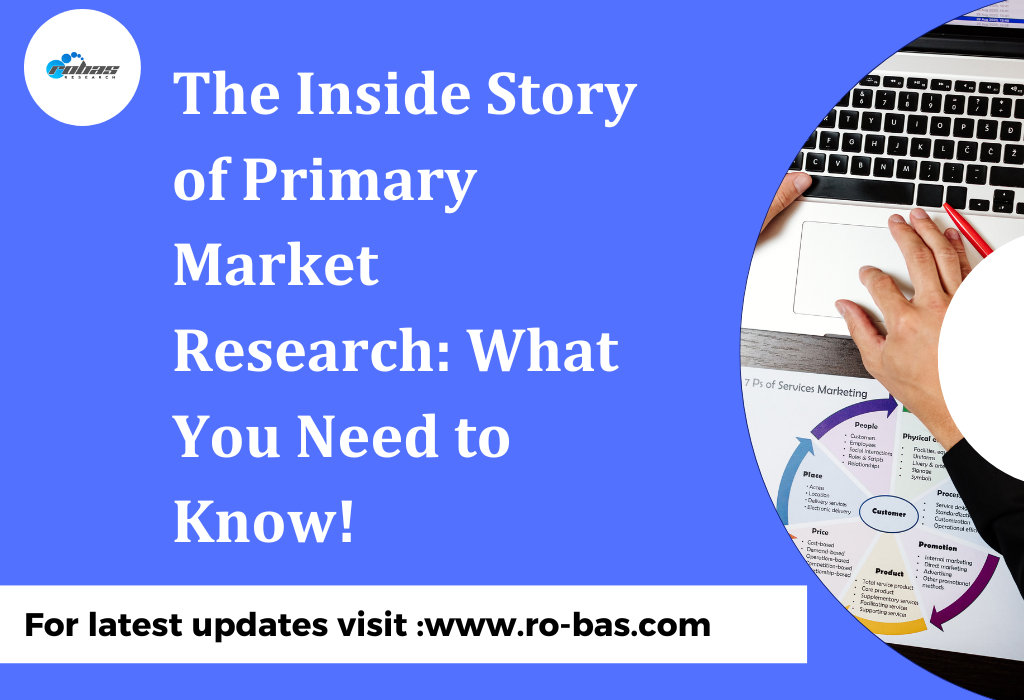
The Inside Story of Primary Market Research: What You Need to Know
Primary market research refers to the process of collecting original data directly from individuals or groups within a target market. This data is gathered firsthand for specific research purposes, providing unique insights into customer preferences, market trends, and competitive landscapes. In this comprehensive guide, we delve into the depths of ” Primary Market Research”, exploring its definition, methodologies, advantages, challenges, and best practices.
What is Primary Market Research?
Primary market research refers to the process of collecting original data directly from the source or target audience. This type of research involves gathering information directly from individuals or groups through various methods such as surveys, interviews, observations, experiments, or field trials. By engaging with target audiences firsthand, businesses gain firsthand insights that are specific and relevant to their objectives.
“Imagination is the highest form of research.” – Albert Einstein
The Importance of Primary Market Research
Primary market research is indispensable for businesses and organizations across industries due to its critical role in informing informed decision-making and strategic planning. Let’s explore the key reasons why primary market research is essential:
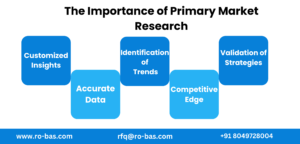
- Customized Insights: Primary research enables businesses to ask specific questions relevant to their unique needs and objectives. This allows for tailored insights that address precise concerns or interests.
- Accurate Data: By conducting primary research, businesses obtain firsthand data that is accurate, up-to-date, and reflective of current conditions. This ensures that the information used for decision-making is reliable and relevant.
- Identification of Trends: Identifying trends is crucial for businesses to stay competitive and adapt to changing market conditions.
- Competitive Edge: Understanding customer needs better than competitors is indeed a key strategy for gaining a competitive advantage in the marketplace.
- Validation of Strategies: Primary research helps in testing assumptions and hypotheses directly with the target audience. This validation ensures that decisions are based on real-world data rather than assumptions or guesswork.
Methodologies for Primary Market Research
Primary market research utilizes a range of methodologies to gather original data directly from target audiences. These methodologies fall into two main categories: quantitative and qualitative research approaches. Here’s an overview of common methodologies used in primary market research:
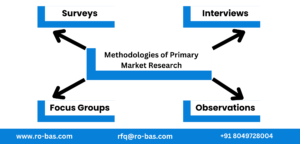
- Surveys: Surveys are one of the most widely used quantitative research methods. They involve administering structured questionnaires to a sample of respondents to gather data on attitudes, opinions, behaviors, or demographic characteristics.
- Interviews: In-depth discussions with individuals or groups are a fundamental qualitative research methodology that yields rich and detailed insights into attitudes, perceptions, motivations, and experiences.
- Focus Groups: Organizing moderated group discussions with a small number of participants representing the target audience. Participants share their opinions, reactions, and ideas in a collaborative setting, generating qualitative data through interaction and discussion
- Observations: Observational research involves systematically observing and recording behaviors, interactions, or phenomena in natural settings without direct intervention.
Advantages of Primary Market Research
Primary market research offers several advantages over secondary research (which involves using existing data and information gathered by others). Here are some key advantages of research:
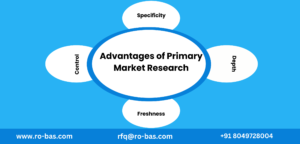
- Specificity: Primary research can be tailored to meet the specific objectives of your study. You have control over the research design, methodology, and questions asked, ensuring that the data collected directly addresses your needs.
- Freshness: we are emphasizing the timeliness and relevance of the data to the current market scenario.
- Control: Ensuring the quality and reliability of collected data is a critical aspect of conducting primary market research.
- Depth: Primary research indeed facilitates a deeper understanding of consumer behavior, attitudes, and motivations, which can significantly impact various aspects of business operations.
Challenges of Primary Market Research
Primary market research, despite its advantages, presents several challenges that researchers and businesses encounter. Here are some common challenges associated with market research:
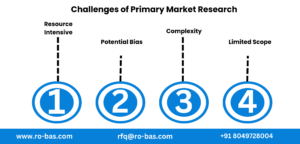
- Resource Intensive: Primary research demands human resources, including skilled researchers and research teams, project managers, and administrative support.
- Potential Bias: Biases in primary research can indeed impact the validity and reliability of research outcomes. Understanding and mitigating these biases is essential for obtaining accurate and meaningful insights.
- Complexity: Analyzing primary research data, particularly qualitative data obtained from interviews or focus groups, indeed presents unique challenges that require specialized skills and tools.
- Limited Scope: Relying solely on primary research, while valuable for obtaining direct insights into specific aspects of consumer behavior or market preferences, may indeed have limitations in capturing broader dynamics.
Best Practices in Primary Market Research
Primary market research involves gathering firsthand data directly from the source, whether it’s potential customers, industry experts, or stakeholders. Implementing best practices ensures that the research is effective, insightful, and ultimately beneficial for decision-making. Here are some best practices to consider when conducting primary market research:
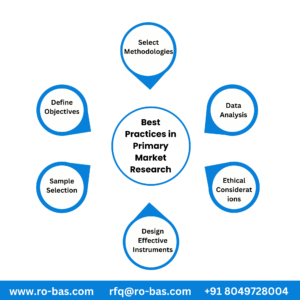
- Define Objectives: Defining clear research objectives is foundational to conducting effective primary market research.
- Select Methodologies: Choose appropriate research methods based on your objectives and audience. Common methodologies include surveys, interviews, focus groups, observations, and experiments.
- Design Effective Instruments: Developing well-crafted survey questionnaires, interview guides, or discussion protocols is crucial for effective primary market research.
- Sample Selection: Ensuring that your sample represents the target population accurately is crucial for the validity and reliability of your primary market research findings.
- Data Analysis: To derive meaningful insights from your research data, it’s essential to apply robust analysis techniques that align with your research objectives and the nature of your data.
- Ethical Considerations: Adhering to ethical standards in data collection and analysis is essential to ensure the integrity, privacy, and well-being of research participants and stakeholders.
Real-World Examples
To illustrate the importance of adhering to ethical standards in data collection and analysis, and to provide real-world examples of ethical practices, consider the following scenarios and how ethical considerations are applied:
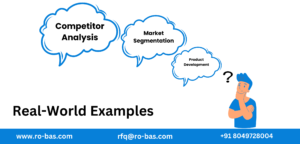
- Product Development: Product development is a critical process within a business that involves creating new products or improving existing ones to meet customer needs, gain a competitive edge, and drive revenue growth.
- Market Segmentation: Market segmentation is the process of dividing a broad target market into smaller, more defined segments based on distinct characteristics, needs, behaviors, or demographics.
- Competitor Analysis: Competitor analysis is a critical component of market research that involves evaluating the strengths and weaknesses of current and potential competitors.
Conclusion
“Primary Market Research” cannot be overstated for businesses operating in competitive markets. By directly engaging with consumers and uncovering valuable insights, organizations gain the ability to innovate strategically, navigate market dynamics with precision, and make informed decisions that foster sustainable growth. Embracing best practices in primary research equips businesses with a profound understanding of their customers, markets, and emerging opportunities, ultimately positioning them for strategic success in an ever-changing business environment. This mastery of research is not just a tool—it is a fundamental strategy for businesses to thrive and prosper in today’s complex marketplace.
FAQs About Primary Market Research
- What is Primary Market Research?
Primary market research refers to the process of collecting original data directly from the source, which could be potential customers, current customers, or other stakeholders within a specific industry. This type of research is conducted to address specific business objectives, gather insights, and make informed decisions based on firsthand information.
-
Why is primary market research important?
Marketing research plays a vital role in the decision-making processes by supplying relevant, up-to-date and accurate data to the decision-makers. Managers need up-to-date information to access customer needs and wants, market situation, technological change, and extent of competition.
-
What are the advantages of conducting primary market research?
It involves gathering first-hand data from potential customers, clients, and stakeholders to better understand their needs, preferences, and behaviors. By doing so, companies can identify new opportunities, mitigate risks, and make more informed decisions.


